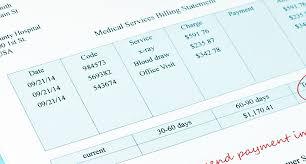
Whenever a patient visits a doctor, there is a lot of coordination between various medical staff and non-medical staff from the time of registration of the patient to the appointment, to procedures performed, to medical bill generation and clearance of the dues either by an insurance provider or the patient. One of the significant aspects that aid in the smooth workflow of a healthcare provider is medical coding.
What is medical coding?
Medical coding is one of the most crucial jobs in a healthcare facility transforming the critical information related to healthcare diagnosis, procedures performed, medical services provided and equipment used in providing healthcare services into universally accepted alphanumeric codes. These alphanumeric codes are vital in preparing and processing a medical claim. Every patient visit entails an enormous amount of data that can’t be included in detail for preparing bills and getting reimbursements from the insurance providers. But, insurance providers will need all the information to verify the accuracy and authenticity of the medical bill. To ease the process of transferring all the data accurately medical codes are used that are universally acceptable and allow uniform documentation among various medical facilities. Also, the codes assigned by the medical coders, aid in analyzing the prevalence of various ailments and the effectiveness of treatments being offered.
Medical coding jobs involve reviewing medical records including reports from doctors regarding diagnosis, prescription, procedures performed and the equipment used for treatment, etc. The people involved with the coding profession and working in medical coding companies should be well-versed with three sets of medical codes that are regularly used in assigning codes to various processes and procedures performed.
International Classification of Diseases (ICD) Codes: This code set is related to the diagnosis of a patient’s ailment and describes the causes of injury, health, and death. Established by the World Health Organization, the ICD codes are updated periodically and a number is used after ICD which represents the revision of the code set that is in use. For example, ICD -10 code set is being used now which means it is the tenth revision of the code set. The ICD codes are useful in representing a patient’s condition and the doctor’s diagnosis which play a critical role in determining the medical necessity in the billing and medical claim processes.
Current Procedure Terminology (CPT) codes: This code set is used to document a wide range of medical procedures performed by a doctor in his/her office. Published and maintained by the American Medical Association, these codes are updated on an annual basis. These are five-digit codes divided into three categories. Further two-digit numeric or alpha-numeric codes can be added at the end of the first-category codes to provide finer details.
Healthcare Common Procedure Coding System (HCPCS) codes: These codes are based on the CPT codes and are developed by the Center for Medicare and Medicaid Studies (CMS). The HCPCS codes are mainly related to the services, procedures, and equipment that are not covered by the CPT codes and are divided into two levels.
The onus is on the people in medical coding jobs and medical coding companies to ensure that all the details of a patient visit are assigned accurate codes to enable error-free medical bills and claims.